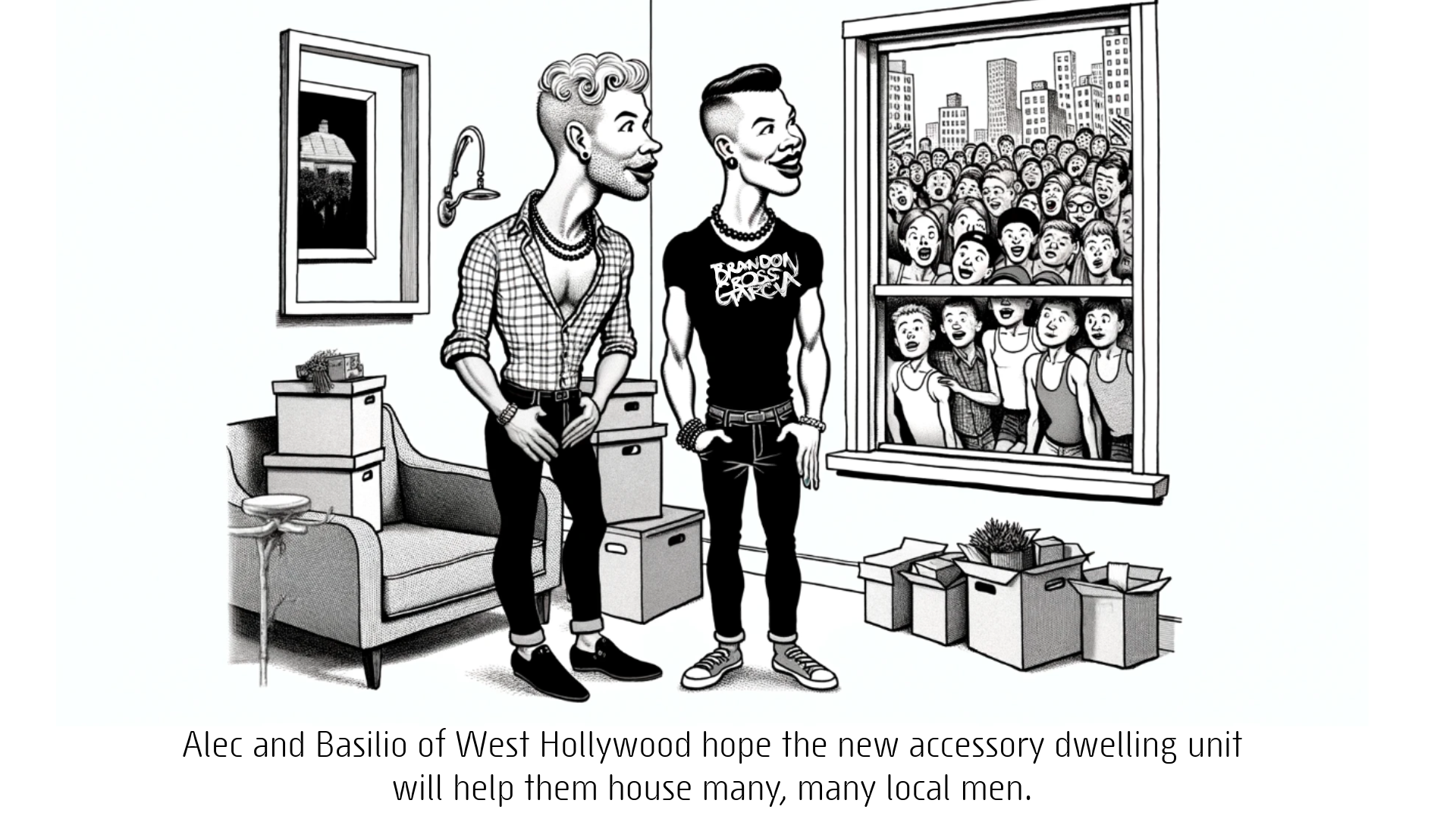
A new report by the Brookings Institute evaluated West Hollywood’s affordable ADU pilot program, which focuses on leveraging accessory dwelling units to address housing affordability issues specifically for low-income renters. The findings point to modest progress amid some challenges.
The two-year-old program facilitates the development of ADUs by providing both construction subsidies and operating vouchers, which are essential in a city where land is scarce and property values are high.
WeHo’s program aligns with the city’s strategic goals to increase the availability of affordable housing in a high-opportunity area traditionally comprised of single-family homes and high-income residents. The median homeowner income in WeHo is approximately $145,000, significantly higher than the Los Angeles County median.
This economic backdrop presents unique challenges in motivating homeowners to participate in affordable housing initiatives, as many might not need the additional rental income an ADU could provide, the report claims.
The program has seen modest uptake with a limited number of projects, including a notable project that added a double ADU to a small multifamily property. This approach not only increases the housing stock but also integrates affordable units into existing residential structures, preserving the character of neighborhoods while addressing critical housing needs.
Despite these efforts, scaling up the ADU program in WeHo has been challenging, the report says. Homeowners are required to navigate a complex array of regulations and potentially long permitting processes. While the city provides project management support to encourage homeowner participation and has allocated some of its vouchers to ongoing operations, it does not have funds set aside to subsidize developments upfront.
West Hollywood’s ADU initiative is a part of a broader effort across Los Angeles to combat housing shortages through innovative land use. By adapting single-family properties to include ADUs, WeHo hopes to create expand its affordable housing inventory in response to an acute regional crisis.


Just a reality check. One, in WeHo’s primary single family dwelling neighborhoods, such as West Hollywood West and Norma Triangle, the lots are very small that discourage ADUs. Secondly, who needs the increase in property taxes? To re-coup construction costs, permit fees and property taxes, the rents can hardly be “affordable”. I am happy that homeowners have the flexibility to build ADUs but WeHo has a number of limiting factors, among them being many homeowners don’t need the headache.
Yes. Say an owner spends the $150,000 to fix up and/or build a unit, pays all those crazy fees, higher taxes, then is forced to get undermarket rent, and all under unfair Marxist Rent Control rules. Then, if that wasn’t enough, they end up with a bad tenant who won’t ever leave. No thanks. And it shouldn’t be up to private property owners to solve society’s problems, which in weho are too many freeloaders want to get in on the Weho gravy train of undermarket rent. And every landlord prefers to rent to NON Section 8 people, for the least… Read more »
Anyone who says there is some housing “shortage” is a liar. There are lots of units both for sale and for rent, right away, in weho, and elsewhere. There is, admittedly, a shortage of freeloader units for people who don’t want to pay their own way. My suggestion is they look elsewhere, where there are also lots of units available, at lower, but still fair market prices. Have prospective weho freeloaders looked at Blythe? I know it doesn’t have the glamour of our Sunset Strip, and other places the freeloaders want to live near, but never patronize. Live where you… Read more »
There are over 50 real apartments available on any given day in Weho for under $2,000/month. Any new ADU would be $3,000/month or more. Is that “affordable”?
Who says that an ADU built up the driveway is going to be “affordable”? And what is “affordable”? The Bookings Institute might want to look at the “affordability” of the ADUs that were actually built. They might find that the only affordability in this program is the discounts given to the property owner for building it.
That’s correct plus by converting garages you push more cars onto street parking.
That’s correct. The State of California has determined that people don’t need cars anymore.
The definition of “affordable housing” is any housing that isn’t fair market. Got it?
That is not true, affordable housing is housing that is government controlled, mandated set aside. Housing that is rent controlled is separate – and housing affordability is separate.
It would take too long to pick apart everything you wrote, supposedly a reply to me. I’ll try to re-state it: there are two kinds of housing: fair market, and non fair market.
Are you a freeloader?
The federal government typically defines housing as affordable when it consumes no more than 30 percent of a household’s income.
I think the confusion around here is wehoans think of “affordable housing” as any kind of freeloading/discounted/subsidized housing. You are thinking of it as if someone has the ability to pay for it without sacrificing too much quality of life. If someone is paying over 30% of their income toward housing, they are the typical fools who rent from me and others. I try to steer people in a more responsible direction, by renting in more “affordable” areas, like Barstow, Blythe and Baker. The trade off is living within their means and having self-respect, versus being a weho freeloader begging… Read more »